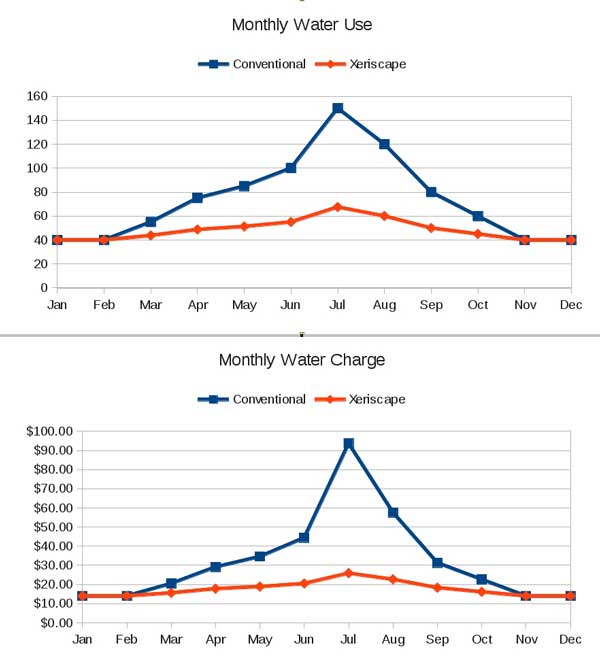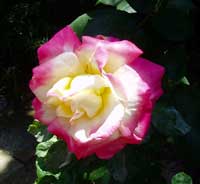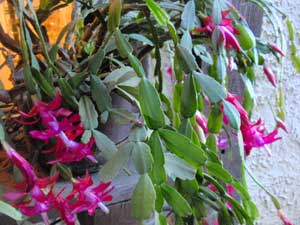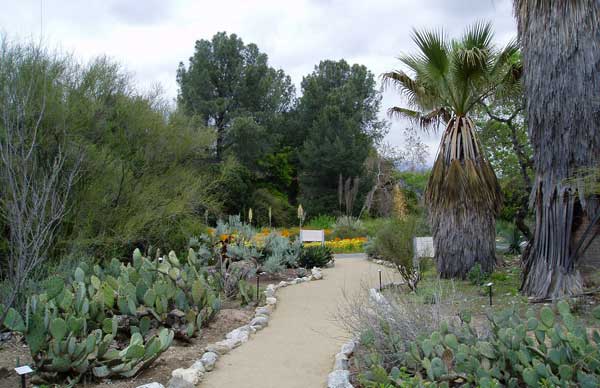 Southern California has just finished its driest year on record. The National Weather service reported that Los Angeles received only 3.49 inches of rainfall between January 1 and December 18, 2013, the lowest amount since records started being collected in 1877. 1 This drought is especially concerning because, here in the south part of the state, we already have to import most of our water from the Colorado River and the Los Angeles Aqueduct. 2 As the most populous state in the country and producer of half of the vegetables, fruits, and nuts grown in the United States, water security is a major concern for politicians and scientists.2.
Southern California has just finished its driest year on record. The National Weather service reported that Los Angeles received only 3.49 inches of rainfall between January 1 and December 18, 2013, the lowest amount since records started being collected in 1877. 1 This drought is especially concerning because, here in the south part of the state, we already have to import most of our water from the Colorado River and the Los Angeles Aqueduct. 2 As the most populous state in the country and producer of half of the vegetables, fruits, and nuts grown in the United States, water security is a major concern for politicians and scientists.2.
We’re not in charge. So what can we do?

http://blogs.ubc.ca/ubcowatershed/2013/01/03/some-xeriscaping-economics/
In our Water Wonders class, we ask our students how they can conserve water. Taking shorter showers, turning off the water during tooth brushing, and watering plants in the morning are several of the most common answers.
Xeriscaping is one water conservation technique that is rarely, if ever, mentioned.
Now, it’s not entirely surprising that 5th and 6th graders don’t know the word, but the concept is easy enough to grasp. Xeriscaping is a way to landscape using less water than traditional landscaping. If I asked you to picture one of the endless suburbs surrounding Los Angeles, odds are you would imagine a stucco house with a lawn and maybe a palm tree or two. In terms of xeriscaping, the palm trees are fine, but the lawn is not. Now, don’t worry, I’m not asking you to give up something beautiful in favor of a parched landscape, merely to trade one type of beauty for another.

Hybrid Tea Rose
Most people think that using less water restricts plant choices to cacti, but that is simply not the case. There are approximately 6,500 native plant species that you can only find in the state of California. 4. By using a plant native to Southern California’s dry climate, this species will naturally need less water to live. With all of these choices of plants that are found nowhere else, why landscape with the same plants used in the rest of the United States? In addition to saving water, using native plants in landscaping can also reduce the amount of pesticides and fertilizer needed, saving money and resources5. A hybrid tea rose; that mainstay of many gardens; can need more than 12 gallons of water a week when the temperature soars above 90 degrees
6, is vulnerable to pests, and requires considerable trimming before it goes dormant. In contrast, our Christmas Cactus is green year round, never requires trimming, and only needs a cup of water every week or so during the hottest part of the summer.

Christmas Cactus
Natives aren’t the only plants that can be used in xeriscaping. The Los Angeles area where our students come from has a Mediterranean climate, characterized by mild winters and dry summers. This climate is found in several other places around the world, including parts of Africa, Australia, Europe, and Asia. Drought tolerant plants from those locations can also be used for xeriscaping projects in California.
Lists of both native and nonnative plants for xeriscaping can be found in numerous places, such as the California Native Plant Society, California gardens.com, eHow
7, and Better Homes and Gardens
8. It is also becoming easier to locate plants for xeriscaping as nurseries specializing in drought tolerant plants are becoming more common.

Despite having all of these resources available, changing from traditional landscaping to xeriscaping can be a daunting prospect. Even knowing that it saves water and money , California homeowners typically spend up to 60% of their water on irrigation for lawns 9.) it is not always easy to translate that knowledge into action. To help residents make the change to xeriscaping, rebates for turf removal projects per square foot are offered in Southern California9.
California is a dry place. All of us, every California resident, needs to do our part to save water. The children we teach can only make so many changes themselves, but the ideas that they learn at High Trails can help shape their future choices as consumers and impact their communities. For my part, I hope they remember that funny word I teach them in Water Wonders. After all, xeriscaping shows that saving water can be a beautiful thing.

Rancho Santa Ana Botanic Gardens
At High Trails Outdoor Science School, we literally force our instructors to write about elementary outdoor education, teaching outside, learning outside, our dirty classroom (the forest…gosh), environmental science, outdoor science, and all other tree hugging student and kid loving things that keep us engaged, passionate, driven, loving our job, digging our life, and spreading the word to anyone whose attention we can hold for long enough to actually make it through reading this entire sentence. Whew…. www.dirtyclassroom.com
- http://forecast.weather.gov/product.php?site=SJT&product=DGT&issuedby=LOX. ↩
- http://www.aquafornia.com/index.php/where-does-californias-water-come-from/ ↩
- http://www.aquafornia.com/index.php/where-does-californias-water-come-from/ ↩
- http://www.dfg.ca.gov/habcon/plant/ ↩
- http://www.calrecycle.ca.gov/organics/xeriscaping/ ↩
- http://www.ehow.com/list_6760955_xeriscape-california-plant-list.html ↩
- http://www.bhg.com/gardening/gardening-by-region/southern-california/top-native-plants-of-southern-california/ ↩
- http://socalwatersmart.com/index.php/qualifyingproducts/turfremoval ↩
- http://socalwatersmart.com/index.php/qualifyingproducts/turfremoval ↩
- http://socalwatersmart.com/index.php/qualifyingproducts/turfremoval ↩

Comments are closed.